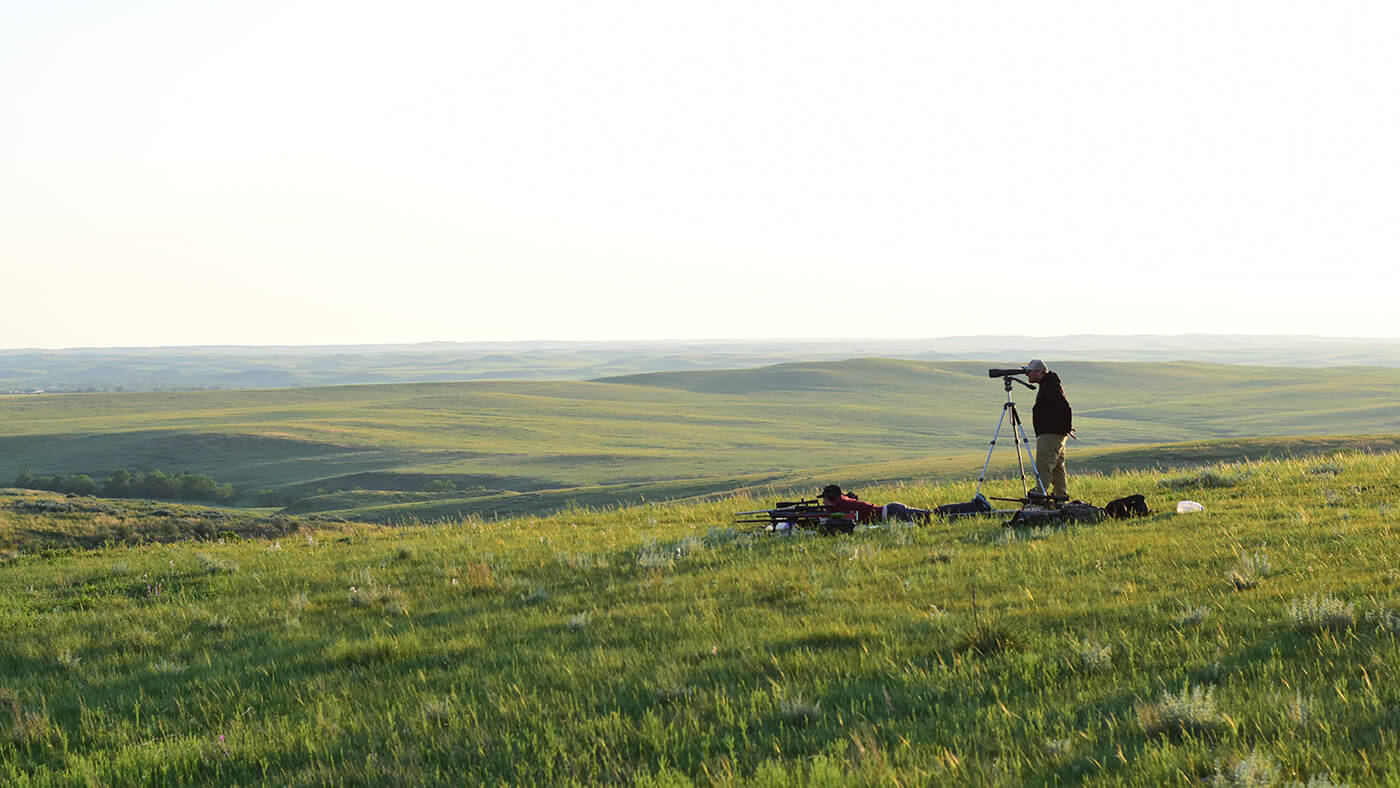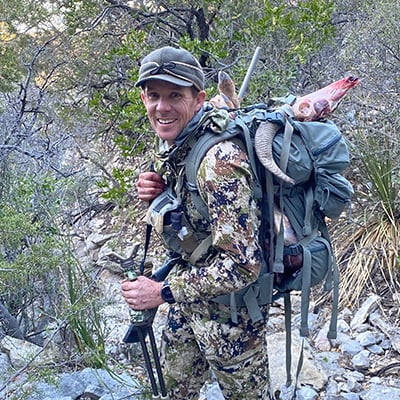- Savage Blog
- Basic Knowledge for Shooting Long Range
Basic Knowledge for Shooting Long Range

Though modern-day optics have made long distance shooting easier, it’s still an art, and if you want to become a proficient long range shooter, there’s must-know info.
Whether you are new to the rifle/scope game or a seasoned veteran, you'll want to stretch the yardage of your combo at some point.
And, why not.
Shooting distance is fun and, in my opinion, will make you a better rifle shot and help you get to know your rifle/scope system better. When you can produce tight three-shot groups at distances of 500, 600, 700 yards, and beyond, you'll be lights out on those standard hunt distances between 100 and 300 yards.
MRAD or MOA
Before diving too far into the long range game, we need to define MRAD and MOA. You need to know the difference and understand each. In some instances, the scope you purchase will give you choices of MRAD or MOA adjustments.
To keep it simple, MRAD stands for milliradian, and in the rifle/scope world, it's commonly abbreviated as MIL. The advantage to MIL is its metric, and if you are used to metric units like millimeters and centimeters, it will be easier to understand. Another benefit to the MIL system is that most professional shooters prefer it; thus, many top-end scopes use MIL.
The deflection of .10 MILS is 1 cm at 100 meters, 2 cm at 200 meters, 3 cm at 300 meters, and the list goes on. The milliradian system works with whole numbers (1, 2, 3, 4, 5, etc), making it easy to understand. Say, for example, you plan for a bullet drop of 55 cm at 500 meters. If you're using the MIL system, which equals 1 cm at 100 meters, you would need to adjust your elevation dial-up 11 clicks. The simple formula for this is to divide 55 by 500.
MOA stands for minutes of angle, also known as an arcminute, and it is equal to a deviation of 1 inch at 100 yards, 2 inches at 200 yards, and down the line, we go. Most scopes that use MOA allow for 1/4-inch MOA adjustments, which means a single windage click of 1/4-inch left will adjust reticle alignment 1/4-inch to the right at 100 yards. To move the reticle a full inch — windage or elevation — you would need four clicks of MOA adjustment.
An example of MOA is, say you're on an elk hunting trip and the bull of a lifetime is 400 yards away. Your scope is zeroed at 100 yards, meaning if you hold your crosshairs dead-on at 100 yards, your bullet will hit the center of what you're aiming at. You know your bullet drop is 22 inches at 400 yards when zeroed at 100 yards, so you would need to adjust your elevation turret up 5.5 inches. If you know each click is 1/4-inch MOA, and it takes four clicks to make a 1-inch adjustment, you know you will need to go up 22 clicks.
The advantages of the MOA system include that 1/4 MOA adjustments are a tad easier to make, and if you're used to standard measurements like inches, feet, and yards, it will probably be your go-to. If you plan to use a ballistic chart or table, most of these are in feet and yards.
How To Make Wind Calls?
When you start sending lead at long distances downrange, several environmental factors come into play, but the wind is the one you'll want to master. The easiest way to get accurate wind speeds is to purchase a Kestrel. A good Kestrel will tell you the speed of the wind, the temperature, humidity, and other need-to-know details.
Of course, you need to know what the wind is doing from the location you're planning to shoot from, but you also need to know what it's doing downrange, if possible. Terrain features, trees, and vegetation can change the wind speed and direction between you and the target. Learn to use trees, grass, and other vegetation to tell you what the wind is doing downrange.
Once you determine what the wind is doing between you and your target and know the speed of the wind from where you plan to shoot, you can adjust. The best way to learn to adjust for wind and make accurate wind calls is to regularly practice shooting in the wind. Yes, there is some science to it, but many of the best long-range shooters in the game will tell you that making accurate wind calls and adjusting your windage turret correctly is more art than science.
Of course, there are charts and even phone apps that will tell you exactly how many clicks to move your reticle from zero to compensate for different wind speeds, but you can also create these charts yourself through practice sessions.
Using mirage is another excellent way to read the wind and make an accurate wind call. Mirage is the heat waves you see when you look through your scope or spotting scope. If you have a high-power scope, which you should if you're planning to shoot long range, you will see heat waves, even in cold weather, rising through your field of view.
Once you get used to seeing these heatwaves, back the scope off the target so you can focus more on the air between you and the target. If you have no wind or the wind is coming right in your face or hitting you in the back, the mirage will go straight up, but if the mirage changes angle left or right, you know you'll be dealing with some side-to-side wind drift. How much drift depends on the angle of the mirage lines. If the lines are leaning slightly left or right, you can bet the wind speed is between 2 and 4 miles per hour. If the mirage lines are leaning left or right, basically tilted sideways, this indicates a wind speed of 10 miles per hour or more.
The cool thing about mirage is the more you practice and figure out what the lines mean in terms of wind direction and speed; you can zoom your scope in and out to get three or four wind speed/direction estimates. All the information you can gather about what the wind is doing between you and the target matters.

Dial or holdover?
When I first started rifle hunting the West, I was taught to have my scope zeroed at 200 yards. This meant any elk or mule deer standing between 100 or 200 yards would be in my freezer if I did my job and held right on the animal's vitals. However, the first bull I ever killed was standing at 336 yards.
At the time, I didn't have an excellent knowledge of my MOA turret system, and I wasn't about to move my zero. I didn't know my bullet's drop but did know I had a target the size of a trashcan lid that would put the bull down quickly if hit. So, I performed my first-ever holdover — held the crosshairs where I imagined the bull's spine to be and squeezed the trigger. The result was a 168-grain 7mm Rem. Mag. bullet in the bull's heart.
Since that first bull, I've made a lot of holdover shots, and I don't mind the system if you know your scope/ammo/weapon like the back of your hand and practice holdover shots regularly. I don't particularly approve of taking a holdover shot beyond 400 yards.
Many of today's scopes, like those from Leupold and others, have some form of a custom dial system, and in my opinion, whether you're shooting close ranges or distant ranges, these systems are the way to go. You give the scope manufacturer all the information they request. They build you an elevation turret that will provide dial-to-the-yard accuracy if you're shooting the same bullet you did your initial testing with.

When shooting long range (beyond 400 yards), at an animal, it's simply not ethical to use the holdover method. Too much can go wrong, and I've seen some goat ropes occur when an irresponsible hunter decided to put his crosshairs two feet over a 200-inch mule deer's back and pull the trigger. If you want to shoot and hunt at long ranges, you need to take the appropriate optical measures and spend lots of time behind your weapon.

